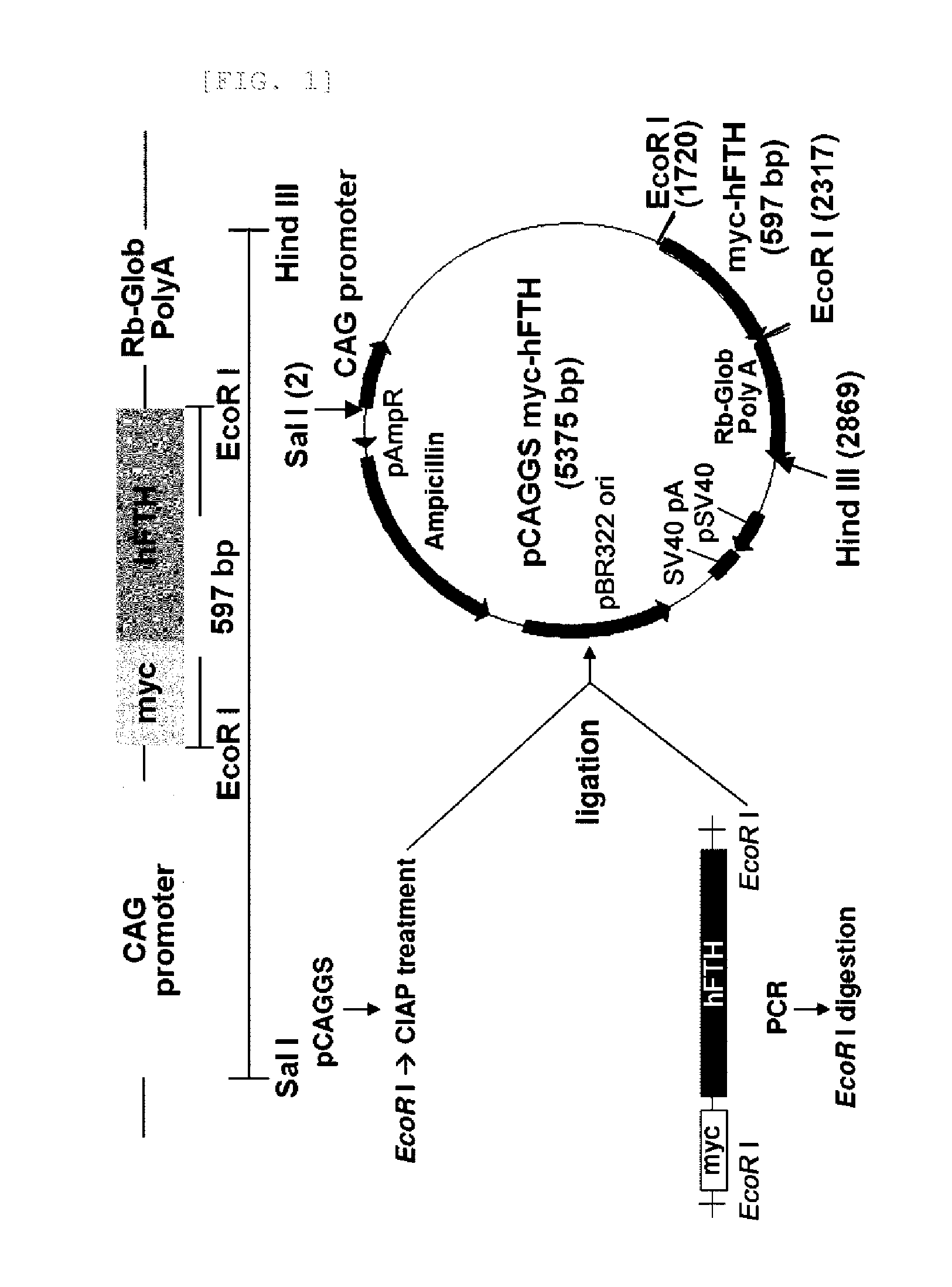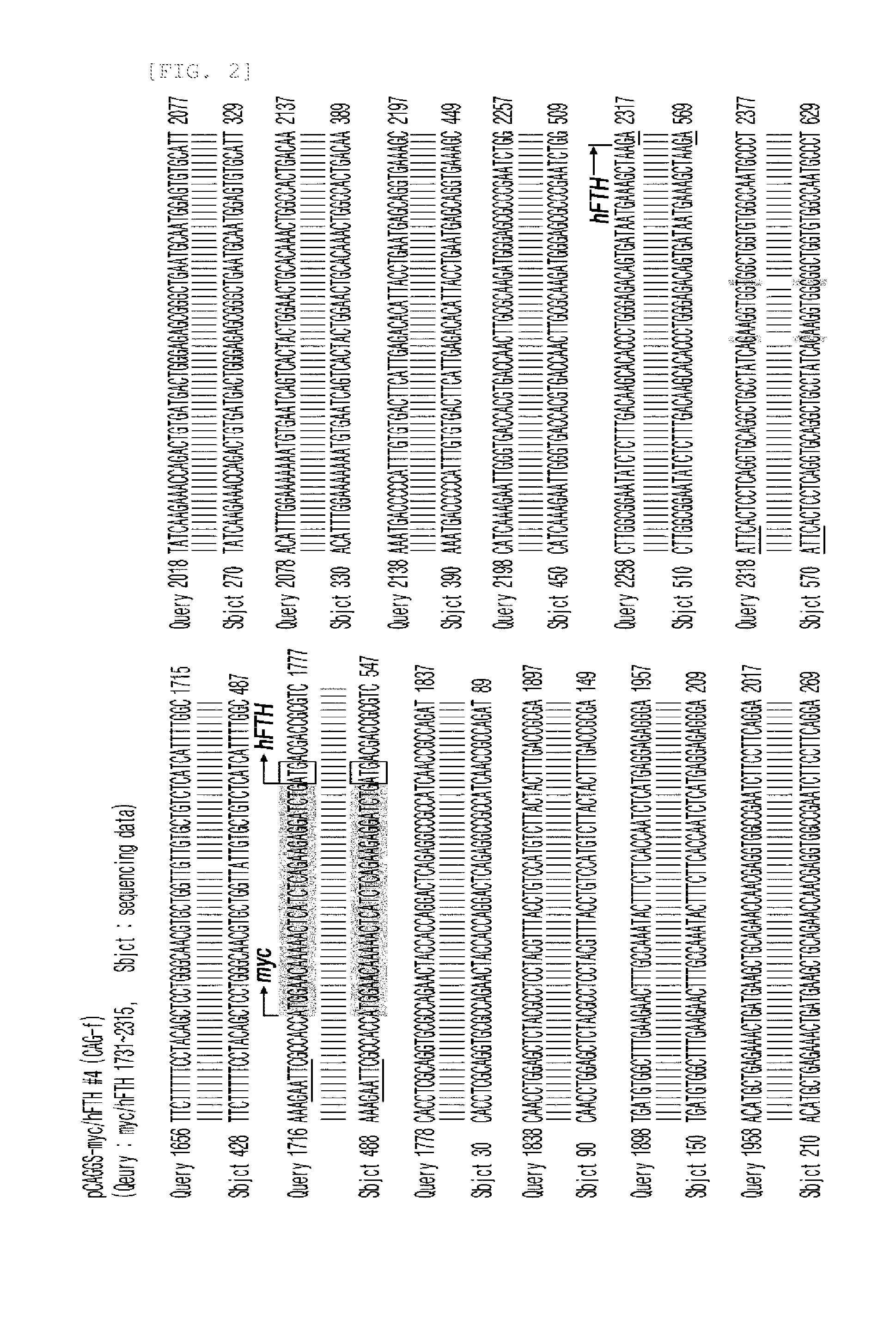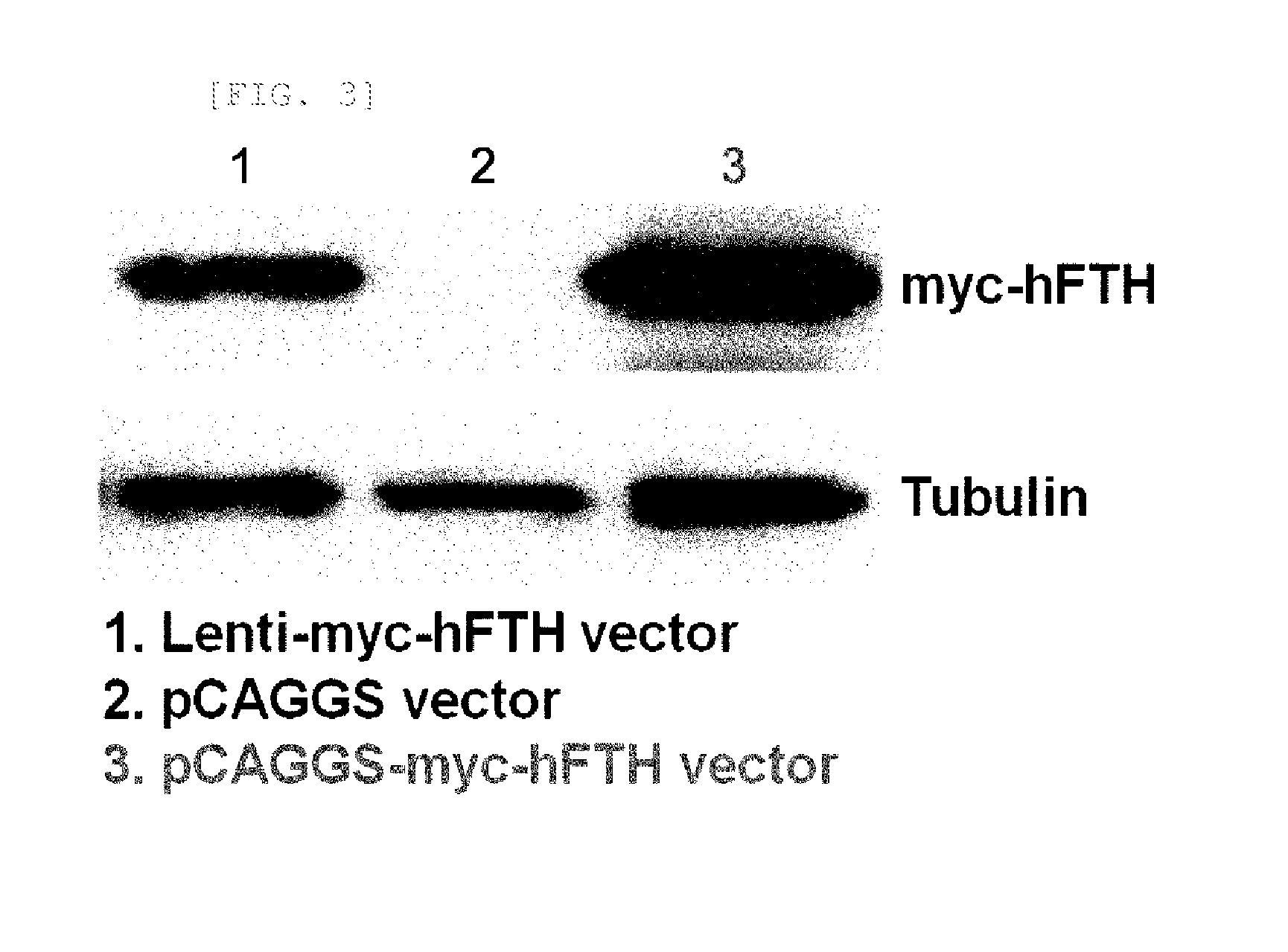Transgenic mouse for expressing human ferritin in tissue non-specific manner and use thereof
a transgenic mouse and tissue technology, applied in the field of recombinant vectors and transgenic mice for expressing human ferritin in tissue non-specific manner, can solve the problem that ferritin cannot be applied to mr imaging of multiple organs
- Summary
- Abstract
- Description
- Claims
- Application Information
AI Technical Summary
Benefits of technology
Problems solved by technology
Method used
Image
Examples
example 1
Construction of Recombinant Human Ferritin Heavy Polypeptide (myc-hFTH, 597 bp)
[0049]The recombinant human ferritin heavy polypeptide (myc-tagged hFTH, myc-hFTH) gene fragment was obtained from LentiM1.141-myc / hFTH (Accession number BG073750) by PCR amplification using oligonucleotide primers (forward; CGGAATTCGCCACCATGGAACAA (SEQ ID NO. 2), reverse; CGGAATTCTTAGCTTTCATTATCACT (SEQ ID NO. 3)). EcoRI restriction enzyme sites were added onto each 5′ region of the primer. For construction of the plasmid vector expressing myc-hFTH under the control of β-actin promoter (FIG. 1), the PCR product (597 bp) was digested with EcoRI and inserted into a pCAGGS vector (Addgene, Cambridge, Mass.). The myc-hFTH-pCAGGS clone inserts were manually sequenced using sequenase version 2.0 kit (Amersham, USA). This sequence was confirmed using the blast searcher (FIG. 2). The myc-hFTH-pCAGGS plasmid was digested with SalI and HindiIII. This DNA fragments (2.9 kb) were purified by dialysis against sterile...
example 2
Transfection of HEK293 Cells and Confirmation
[0051]HEK293 cells were transfected with the myc-hFTH-pCAGGS vector using Lipofectamine (Invitrogen, Carlsbad, Calif.) according to the manufacturer's instructions. The Lenti-myc-hFTH vector was used, as a control. 24 hours after transfection, Western blotting of cell lysates was performed in order to confirm the myc-hFTH expression.
[0052]As a result, myc-hFTH expression was observed in HEK293 cells (FIG. 3).
example 3
Mouse Experiment
[0053]C57BL / 6 and ICR mice were supplied, from the Center for Animal Resource and Development of Seoul National University. Animal experiment was conducted in the Center for Animal Resource and Development of Seoul National University. 4 to 20 week-old laboratory mice were maintained in the individual ventilation cage rack (Thoren caging systems, PA, USA) at 24±2° C. and 50%±5% humidity with a 12 / 12 (light / dark) cycle. Mice were given an irradiated mouse feed (Purina Korea, Seoul, Korea) and 2 ppm chloride added reverse osmosis water.
PUM
| Property | Measurement | Unit |
|---|---|---|
| pH | aaaaa | aaaaa |
| pH | aaaaa | aaaaa |
| concentration | aaaaa | aaaaa |
Abstract
Description
Claims
Application Information
 Login to View More
Login to View More - R&D
- Intellectual Property
- Life Sciences
- Materials
- Tech Scout
- Unparalleled Data Quality
- Higher Quality Content
- 60% Fewer Hallucinations
Browse by: Latest US Patents, China's latest patents, Technical Efficacy Thesaurus, Application Domain, Technology Topic, Popular Technical Reports.
© 2025 PatSnap. All rights reserved.Legal|Privacy policy|Modern Slavery Act Transparency Statement|Sitemap|About US| Contact US: help@patsnap.com



